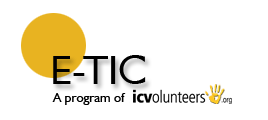ContextUse of technology  As the case study and the survey show, information and communication technologies have played an important role for the people of Senegal and Mali, but applications must be tailored to specific needs and local resources (e.g. low literacy and use of local languages). Given the relatively low literacy rate and oral tradition in most cases, with the strong use of local languages, the most common media remain direct conversation (whether through meetings between farmers, breeders, etc. or conversations by mobile phones) and community radio. In addition to giving farmers, herders and fishermen the ability to buy and sell products more effectively and to make a better profit, access to SMS and the Internet would be of considerable use to them. Nevertheless, there is still little use of the Internet. The information gathered through the field study indicate that mobile phones and community radio are most used and best suited means of communication. When available, the Internet is also an important source of information. However, while many Internet cafes have sprung up in major cities during the last decade, Internet use in rural areas of Senegal and Mali remains marginal. This may evolve over the coming years, with the development of new mobile applications tailored to specific needs (information on weather, markets and health of animals sent by SMS and other mobile technology). Changing EnvironmentHere are some figures about mobile phone use in West Africa:
When ICV first began its work in Timbuktu in 2002, a cyber cafe was available, but there was no mobile phone coverage. Today, many herders in the desert are using mobile phones and solar panels to recharge them. The figures below provide some insight about the development of technologies and the use of mobile phones that has literally exploded in Mali and Senegal in recent years. Languages and literacyThe following languages are spoken by the population in Senegal: French (official), Balanta-Ganja, Hassaniyya, Jola-Fonyi, Mandinka, Mandjak, Mankanya, Noon, Pulaar, Serer-Sine, Soninke and Wolof. The average literacy rate in the country is 39.3%, that is 51.1% for men and 29.2% for women. Data from field studyAs far as the means of communication used by the respondents are concerned, 65.3% receive information at the market, 25.8% receive information from neighbors, 33.9% receive information by means of the community radio and 29% receive information through the use of mobile phones (conversation). Only 10.5% of respondents indicate receiving information by SMS and 2.4% receive information through the Internet (at Internet cafés) and 1.6% through the Internet at home. 38% of respondents indicated using technological tools, such as the mobile phone and Internet, more than once per day and 31% once per day. 12% of respondents indicated never using these tools. 91% of the respondents indicated that they share information concerning agricultural/stock-breeding/fishing practices. 87.8% indicated sharing this information in direct conversation with neighbors, whereas only 26.7% and 16% of respondents respectively indicated sharing information through the use of mobile phones by means of conversation and the sending of SMS messages. Only 2.3% of the respondents share information through the Internet (at an Internet café). With regard to the information which is considered to be useful to receive by the respondents to the survey, the most common are market prices (approx. 70%) and weather conditions (approx. 50%). Other types of information considered useful are issues regarding animal health (approx. 45%) and good practices for the cultivation of various crops (approx. 42%). Mobile phone subscriptions by country (Source: UIT)
Internet Connection in 2008 (Source: UIT)
|

